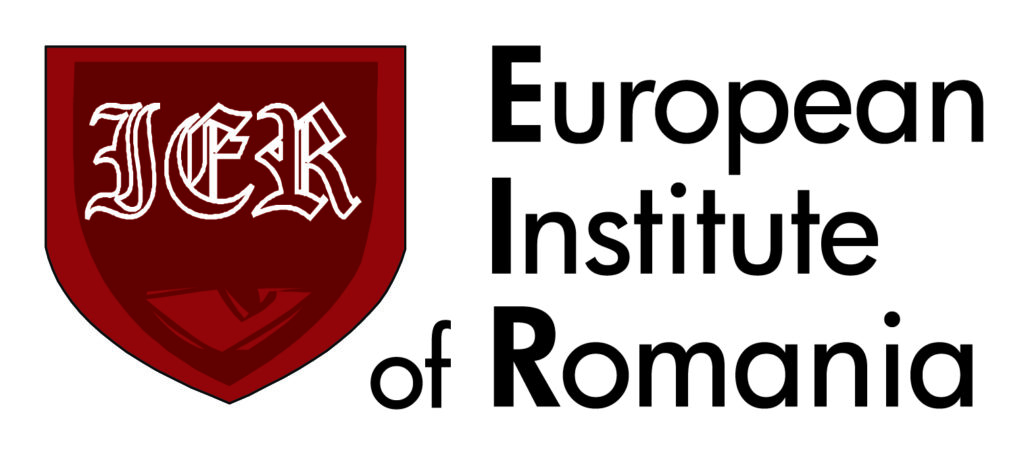Key Points
- The Climate Crisis will exacerbate the ongoing conflicts in the Middle East and North Africa (MENA) and accelerate the displacement of millions of people.
- Heightened temperatures and disruptive water supplies will exacerbate current aspects that drive regional insecurity and proliferate politically or economically driven conflicts.
- This will further hurt the livelihood of many rural and agricultural communities, forcing them to leave for better environments and potentially develop into a migration crisis.
Introduction
In the previous article, the author has explored the impact the Climate Crisis has on the habitability of MENA, where the subjects of heightened temperatures, extreme weather events and water supply disruption have been outlined to have devastating effects on the infrastructure and agricultural output in many parts of the region. The increasing intensity of droughts and rainfall will result in an inability to grow crops, which in turn will lead to greater food and economic insecurity for many people in MENA.
This, in turn, leads to a greater chance of conflict breaking out between or within countries. With countries having lesser agricultural and economic output as a result of the changing climate, and workers in these sectors seeing less revenue, will deepen the social inequality between the demographics of a said country. In the face of their livelihoods being unsustainable, many will turn to violence to support themselves.[1] This can also be a vector for recruitment for terrorist organisations, which can promise various economic benefits in exchange for fighting for them, as observed by Islamic State in West Africa Province (ISWAP) in North Africa.[2] While the literature on the impact the Climate Crisis can have on conflict is not conclusive, it is indicative that this phenomenon plays the role of a catalyst at the very least.
Should a greater conflict arise, as a result, more people will be inevitably displaced as they seek to avoid being caught in a battlefield. People living in rural areas will have to leave their homes not only due to conflict, but also due to harsh conditions that will impede their quality of life or being unable to provide for themselves. The scale of the impact of the Climate Crisis can impact MENA in the next 30 years risks affecting the whole region, with the complex dynamics between environmental and anthropological threats risking causing a major humanitarian or migration crisis. People seeking better places to settle might look either into neighboring countries or towards Europe, further raising the prospect of a major crisis occurring.
“The Threat Multiplier”: Climate-induced conflict
Literature concerning the impact of climate change on the security of the MENA has not reached a consensus, with various studies refuting claims that the two are directly connected while others stating that climate phenomena can act as aggravating factors to the wider socio-economic and cultural contexts. A literature review in 2021 assesses that the research surrounding this topic encompasses a methodological approach focused on qualitative case studies coupled with more extensive use of geographically related risk analysis, combined with a comparative approach between the two.[3] However, it has become increasingly clear that while the Climate Crisis, both within and beyond MENA, may not momentarily be the chiefly reason for conflict in the region concerned, it can be traced as one of the factors that escalates the grievances which can lead to further violence. It is also argued that the poorer Arab states would be more affected by the environmentally related impacts of the Climate Crisis, for reasons of the increasing competitiveness over the control of water to having less available funds to address the impacts of institutional mismanagement (including over-extraction of ground water, causing weaker evapotranspiration).[4] This means it will be more difficult for areas to cool off and an article from 2015 argues that, for every 1C increase in temperature, interpersonal conflicts may increase by 2.4% and intergroup conflicts by 11.3%.[5]
The Climate Crisis will bring upon a disruption of the supply of water in the region, a necessary resource for the vital agricultural sector of many states due to aspects like irrigation. This is especially true in rural communities within said countries, which are often more exposed to the impact of the Climate Crisis and thus forcing them to either adapt to the situation or be forced to leave their homes.
In North Africa, a study concerning the impact of the diminishing Lake Chad on the local communities resulted in less irrigation water, pastoral quality, or smaller fishing yields, which in turn exacerbates the socio-economical woes they were facing before, whereas now more members of these communities struggle to attain the required income to provide for their wellbeing and thus resort to crime more often.[6] The Darfur Conflict, titled as the “first climate change war” by some experts,[7] increased in intensity as a result of mass famine, lack of resources for communities to sustain themselves, and the following mass exodus that caused deep social conflicts that escalated to violence.[8] Despite it having a complex network of causes, environmental causes are perceived as culprits.[9] Seasonal movements of pastors can also be affected by the Climate Crisis, where transhumant trends means moving towards sedentary farmers which will damage their crops, including during harvest season; creating further grievances between the two groups.[10] This is further backed by another study that found a negative impact on real GDP per capita over weather changes, with remittances – which are important for absorbing macroeconomic impacts – being affected as well.[11] The relation between climate and conflict was also observed in Kenya and Ethiopia, where precipitation was seen to have a negative correlation in regard to crime or use of violence.[12]
The Middle East is no exception either, facing intensifying issues of overheating, water, and land alike. The war in Libya left many with very small windows of opportunity to light up their homes or refrigerate food, but also to air condition their households in the face of scorching heat as access to oil fields remains restricted by militia.[13] Libyans have no effective way to cool their homes in the face of a severe heatwave, affecting not only the livelihood of adults but also the education of their children; some prefer to have their power cut in the afternoon so they can sleep with the air conditioner on at night.[14] Not only have there been many examples of militias and armed groups controlling various oil fields, but in many examples the profit made from oil is not trickled down appropriately, leaving many areas impoverished.[15] This can will lead to more public unrest or force others to join militias, with the impacts of the Climate Crisis only intensifying the conditions. The Islamic State’s control over land until 2015 has also observed a different approach to land management, such as changing the intensity of agricultural operations, and putting a greater emphasis on its importance for revenue or appeasing the local population,[16] signaling the possible dynamics of conflict and control over fertile land in the future as a resource for sustainability as desertification occurs.
Migration in the Future
Thus, the Climate Crisis worsens the insecurity in MENA by, at the very least, intensifying the grievances already emplaced from socio-political and economical factors. Migration can be perceived as a coping or adaptation strategy in the face of increasing danger to one’s lifestyle, where the local political or economic situation can push others to leave their homes, as well as being nudged by climate change.[17] The MENA region is argued to be particularly affected by climate change in the future, and it is a region that is estimated to double its population growth by 2050, according to UNICEF.[18] Coincidentally, 2050 is also the year frequently mentioned when arguing that the Middle East has unliveable regions under current climatic trends.[19]
Many more will therefore be subjected to the harsh, future environment and will face the question of leaving for the sake of their livelihoods or their children’s.[20] This can cause a humanitarian crisis and a child rights crisis,[21] with lack of stable access to water, education, food, and more affecting the wellbeing of many displaced people. The number of internally displaced people will rise as more will search for better land, move into urban environments, or cross into other MENA countries such as Jordan or Lebanon, which still hold over 1.5 million (or 26.5% of the externally displaced) refugees from the Syrian civil war.[22] Countries already strained by a refugee crisis will only see further instability in the face of arising numbers from climate-induced migration.
Another route can lead into Europe via Turkey or the Mediterranean as it happened during the migration crisis of 2016 following the Syrian Civil War, potentially destabilising the security on the continent further.[23] Turkey holds over 3.7 million refugees from the war, or 65.8%, and thus may be even more affected.[24] This is not simply due to the fact that the continent offers a better climatic and potentially economic environment for incoming migrants, but was also because of the migration trends during the previous migration crisis. In this respect, the European Union will have to face the question of how to deal with the increasing migration in the coming years or decades.
The EU has developed a cooperation framework with neighbouring states, including south of the Mediterranean, in various policy areas including migration: the European Neighbourhood Policy (ENP).[25] However, the EU does not appear too keen on a policy to accept a steady flow of migrants as much as it wants their management to be done at a distance. This framework is part of an effort to establish resilience-building in member states, which will help manage incoming migration just outside the continent and in the neighbouring region.[26] This became increasingly necessary due to the contradictory strategy it had in 2015, and thus made the Union export migration management to proxy states such as reaching concessions with Turkey in exchange for helping to manage EU borders.[27] Furthermore, situations where climate-induced migrants enter ungoverned areas can result in accelerated flows and the spread of “smooth space”: a post-structuralist concept where danger (from organised crime, militias or non-military sources) can circulate freely in an area; with the presentation of this issue in European media leading to the promotion of reinforcing borders more and securitising the migrants.[28] A comparative study concerning the coverage of the 2016 migration crisis between mostly western European and African media – albeit with limited coverage of the latter’s – discovered that European coverage focused on domestic issues more than on the cause.[29] These elements, and potentially more, remain ongoing challenges for Europe, especially considering the prospect of another migration crisis potentially coming to its shores. In this regard, one might consider that climate induced migration will revive older narratives of far-right governments seeking to demonise migrants for domestic political gains.
Conclusion
The Climate Crisis is, at least for now, not a kickstarter of migration but an aggravating factor together with other elements that force many to leave their homes. Increasing droughts and lack of water can force many people, especially in the rural communities, to leave their lives behind as they cannot sustain their agricultural lifestyle to support themselves. This can lead to a heightened danger of conflict, as battles for water and fertile land can intensify as they become scarcer in MENA. The resulting humanitarian crisis that will follow, where many people risk becoming internally or externally displaced, will be a topic of even greater urgency for the UN. Perhaps, albeit more cynically, it will become an impetus to act with more urgency for MENA states or neighbouring continents, who will witness the flow of immigrants moving towards their borders and triggering further political instability. Yet the fact remains that the intensification of the Climate Crisis will only the present issues worse, and without greater action from the world, not only will this phenomenon become an issue, but also an issue demanding extremely costly solutions, or simply one that will do too little, too late and leave the world to deal with the consequences of its earlier inaction.
Recommendations
- In order to prepare the necessary legal framework to deal with the coming migration, an expansion of the UN 1951 Refugee Convention is required and must go beyond the limitations of identifying refugees only as people fleeing “persecution”. It must include clauses that tackle the climate-related threats which can force such people to flee. This should be considered also as a step to deal with economic migration from those affected by the Climate Crisis.
- Resilience-building operations within the ENP must also include support for building climate-resistant infrastructure meant to answer the arising challenges that include extreme temperature or water supply disruptions. Further support should be given to neighbouring states towards tackling organised crime and smuggling targeting vulnerable migrants.
- The securitisation and politicisation of migration, in Europe and beyond, must be tackled to avoid the exploitation of populist or far-right movements to allow them to gain further public exposure and political power. Furthermore, avoiding securitisation is necessary as part of preventing the mistreatment of migrants and worsening an accompanying humanitarian crisis.
- Conflict resolution efforts must adjust to the possibility of dealing with an increase in resource-focused wars, alongside ones that were started from political origins.
Bibliography
Abouyoub Y., (2011) “Climate: The Forgotten Culprit. The Ecological Dimension of the Darfur Conflict”, Race, Gender and Class, 19:1/2. p. 150-172, Available at: http://www.jstor.org/stable/43496864
Asharq Al-Awsat, “Fuel Shortage Crisis Deepens Sufferings of Cities Southern Libya”, Asharq Al-Awsat, 17 March 2020, Available at: https://english.aawsat.com//home/article/2184721/fuel-shortage-crisis-deepens-sufferings-cities-southern-libya
Berlingozzi L., Stoddard E., (2020) “Assessing Misaligned Counterinsurgency Practice in Niger and Nigeria”, The International Spectator, 55:4, p.37-53, Available at: https://doi.org/10.1080/03932729.2020.1833472
Burke M., et. al., (2015), “Climate and Conflict”, Annual review of economics, 7:1, p.577-617, Available at: https://www.annualreviews.org/doi/pdf/10.1146/annurev-economics-080614-115430
Dahan N., “Deadly heatwave and 14-hour power cuts leave Libyans on the edge”, Middle East Eye, 15 August 2018, Available at: https://www.middleeasteye.net/news/deadly-heatwave-and-14-hour-power-cuts-leave-libyans-edge
De Sherbinin A., “Climate Impacts as Drivers of Migration”, Migration Institute Policy, 23 October 2020, Available at: https://www.migrationpolicy.org/article/climate-impacts-drivers-migration
Easton T., et.al., (2019) “Conflict Economies in the Middle East and North Africa”, London: Chatham House, Available at: https://www.chathamhouse.org/2019/06/conflict-economies-middle-east-and-north-africa
Eklund L., et al., (2017) “How conflict affects land use: agricultural activity in areas seized by the Islamic State”, Environmental Research Letters, 12:5, Available at: https://doi.org/10.1088/1748-9326/aa673a
Fakhoury T., (2021) “The external dimension of EU migration policy as region-building? Refugee cooperation as contentious politics, Journal of Ethnic and Migration Studies, Available at: https://doi.org/10.1080/1369183X.2021.1972568
Fengler S., et. al., (2020), “Covering Migration—in Africa and Europe: Results from a Comparative Analysis of 11 Countries,” Journalism Practice, 16:1, p. 140-160, Available at: https://doi.org/10.1080/17512786.2020.1792333
Habib H., (2022) “Climate change, macroeconomic sensitivity and the response of remittances to the North African countries: a panel VAR analyse”, International Journal of Sustainable Development & World Ecology, Available at: https://doi.org/10.1080/13504509.2022.2028688
Hakim S. (2011), “The Role of Climate Change in the Darfur Crisis”, In: Leal Filho W. (eds) “The Economic, Social and Political Elements of Climate Change. Climate Change Management.”, (Springer, Berlin: Heidelberg), Available at: https://doi.org/10.1007/978-3-642-14776-0_48
Mason, M. (2019), “Climate Change and Conflict in the Middle East.”, International Journal of Middle East Studies, 51:4, 626-628, Available at: https://doi.org/10.1017/S0020743819000709
Mekelberg Y., Fanning K., “The Coming Climate Migration Crisis in the Middle East and North Africa”, Newlines Institute, 7 December 2021, Available at: https://newlinesinstitute.org/climate-migration/the-coming-climate-migration-crisis-in-the-middle-east-and-north-africa/
Nunn N., McGuirk E., “How climate shocks trigger inter-group conflicts: Evidence from Africa’s transhumant pastoralists”, VoxDev, 30 April 2021, Available at: https://voxdev.org/topic/energy-environment/how-climate-shocks-trigger-inter-group-conflicts-evidence-africa-s-seasonal-migrants
Okpara, U.T., et. al., (2016) “Lake drying and livelihood dynamics in Lake Chad: Unravelling the mechanisms, contexts and responses.”, Ambio, 45, p.781–795, Available at: https://doi.org/10.1007/s13280-016-0805-6
Pal S. J., Eltahir E.A.B., (2016), “Future temperature in southwest Asia projected to exceed a threshold for human adaptability”, Nature Climate Change, 6, p. 197-200, Available at: https://doi.org/10.1038/nclimate2833
Panebianco S., (2020) “The EU and migration in the Mediterranean: EU borders’ control by proxy”, Journal of Ethnic and Migration Studies, Available at: https://doi.org/10.1080/1369183X.2020.1851468
Popovski V., “Foresight Africa viewpoint: Does climate change cause conflict?”, Brookings Institute, 20 January 2017, Availeble at: https://www.brookings.edu/blog/africa-in-focus/2017/01/20/does-climate-change-cause-conflict/
Rothe D., Methmann C., (2014), “Tracing the spectre that haunts Europe: the visual construction of climate-induced migration in the MENA region”, Critical Studies on Security, 2:2, p.162-179, Available at: https://doi.org/10.1080/21624887.2014.909226
Ryan D., “Stanford-led study investigates how much climate change affects the risk of armed conflict”, Standford News, 19 June 2019, Available at: https://news.stanford.edu/2019/06/12/climate-change-cause-armed-conflict/
Sharifi A., et. al., (2021), “Climate-induced stressors to peace: a review of recent literature”, Environmental Research Letters, 16:7, Available at: https://doi.org/10.1088/1748-9326/abfc08
Timofte, C., “Scorching Fate: The Impact of the Climate Crisis on Liveability in the Middle East and North Africa”, Institute of New Europe, January 2022, Available at: https://ine.org.pl/en/scorching-fate-the-impact-of-the-climate-crisis-on-liveability-in-the-middle-east-and-north-africa/
United Nations Children’s Fund, (2019) “MENA Generation 2030: Investing in children and youth today to secure a prosperous region tomorrow”, New York: United Nations Children’s Fund, Available at: https://data.unicef.org/resources/middle-east-north-africa-generation-2030/
United Nations Children’s Fund, (2021) “The Climate Crisis is a Child Rights Crisis:: Introducing the Children’s Climate Risk Index.”, New York: United Nations Children’s Fund (UNICEF), Available at: https://www.unicef.org/media/105376/file/UNICEF-climate-crisis-child-rights-crisis.pdf
United Nations High Commissioner for Refugees, (2021), “Climate Change And Displacement In MENA”, Geneva: United Nations High Commissioner for Refugees, Available at: https://www.unhcr.org/6141fa9d4.pdf
United Nations High Commissioner for Refugees, “Syria Regional Refugee Response Data”, UNHCR, 2022, Available at: https://www.unhcr.org/6141fa9d4.pdf https://data2.unhcr.org/en/situations/syria
Van Weezel, S. (2019). “On climate and conflict: Precipitation decline and communal conflict in Ethiopia and Kenya”, Journal of Peace Research, 56:4, p.514–528. Available at: https://doi.org/10.1177/0022343319826409
Wierich A., (2021),“Solving Problems Where They Are Made? The European Neighbourhood Policy and Its Effects on the Context of Other Migration-Related Policies of the European Union”, Perspectives on European Politics and Society, 12:3, Available at: https://doi.org/10.1080/15705854.2011.596304
[1] Ryan D., “Stanford-led study investigates how much climate change affects the risk of armed conflict”, Standford News, 19 June 2019, Available at: https://news.stanford.edu/2019/06/12/climate-change-cause-armed-conflict/
[2] Berlingozzi L., Stoddard E., (2020) “Assessing Misaligned Counterinsurgency Practice in Niger and Nigeria”, The International Spectator, 55:4, p.37-53, Available at: https://doi.org/10.1080/03932729.2020.1833472
[3] Sharifi A., et. al., (2021), “Climate-induced stressors to peace: a review of recent literature”, Environmental Research Letters, 16:7, Available at: https://doi.org/10.1088/1748-9326/abfc08
[4] Mason, M. (2019), “Climate Change and Conflict in the Middle East.”, International Journal of Middle East Studies, 51:4, 626-628, Available at: https://doi.org/10.1017/S0020743819000709
[5] Burke M., et. al., (2015), “Climate and Conflict”, Annual review of economics, 7:1, p.577-617, Available at: https://www.annualreviews.org/doi/pdf/10.1146/annurev-economics-080614-115430
[6] Okpara, U.T., et. al., (2016) “Lake drying and livelihood dynamics in Lake Chad: Unravelling the mechanisms, contexts and responses.”, Ambio, 45, p.781–795, Available at: https://doi.org/10.1007/s13280-016-0805-6
[7] Popovski V., “Foresight Africa viewpoint: Does climate change cause conflict?”, BrookingsInstitute, 20 January 2017, Availeble at: https://www.brookings.edu/blog/africa-in-focus/2017/01/20/does-climate-change-cause-conflict/
[8] Hakim S. (2011), “The Role of Climate Change in the Darfur Crisis”, In: Leal Filho W. (eds) “The Economic, Social and Political Elements of Climate Change. Climate Change Management.”, (Springer, Berlin: Heidelberg), Available at: https://doi.org/10.1007/978-3-642-14776-0_48
[9] Abouyoub Y., (2011) “Climate: The Forgotten Culprit. The Ecological Dimension of the Darfur Conflict”, Race, Gender and Class, 19:1/2. p. 150-172, Available at: http://www.jstor.org/stable/43496864
[10] Nunn N., McGuirk E., “How climate shocks trigger inter-group conflicts: Evidence from Africa’s transhumant pastoralists”, VoxDev, 30 April 2021, Available at: https://voxdev.org/topic/energy-environment/how-climate-shocks-trigger-inter-group-conflicts-evidence-africa-s-seasonal-migrants
[11] Habib H., (2022) “Climate change, macroeconomic sensitivity and the response of remittances to the North African countries: a panel VAR analyse”, International Journal of Sustainable Development & World Ecology, Available at: https://doi.org/10.1080/13504509.2022.2028688
[12] Van Weezel, S. (2019). “On climate and conflict: Precipitation decline and communal conflict in Ethiopia and Kenya”, Journal of Peace Research, 56:4, p.514–528. Available at: https://doi.org/10.1177/0022343319826409
[13] Asharq Al-Awsat, “Fuel Shortage Crisis Deepens Sufferings of Cities Southern Libya”, Asharq Al-Awsat, 17 March 2020, Available at: https://english.aawsat.com//home/article/2184721/fuel-shortage-crisis-deepens-sufferings-cities-southern-libya
[14] Dahan N., “Deadly heatwave and 14-hour power cuts leave Libyans on the edge”, Middle East Eye, 15 August 2018, Available at: https://www.middleeasteye.net/news/deadly-heatwave-and-14-hour-power-cuts-leave-libyans-edge
[15] Easton T., et.al., (2019) “Conflict Economies in the Middle East and North Africa”, London: Chatham House, Available at: https://www.chathamhouse.org/2019/06/conflict-economies-middle-east-and-north-africa
[16] Eklund L., et al., (2017) “How conflict affects land use: agricultural activity in areas seized by the Islamic State”, Environmental Research Letters, 12:5, Available at: https://doi.org/10.1088/1748-9326/aa673a
[17] De Sherbinin A., “Climate Impacts as Drivers of Migration”, Migration Institute Policy, 23 October 2020, Available at: https://www.migrationpolicy.org/article/climate-impacts-drivers-migration
[18] United Nations Children’s Fund, (2019) “MENA Generation 2030: Investing in children and youth today to secure a prosperous region tomorrow”, New York: United Nations Children’s Fund (UNICEF), Available at: https://data.unicef.org/resources/middle-east-north-africa-generation-2030/
[19] Pal S. J., Eltahir E.A.B., (2016), “Future temperature in southwest Asia projected to exceed a threshold for human adaptability”, Nature Climate Change, 6,p. 197-200, Available at: https://doi.org/10.1038/nclimate2833
[20] United Nations High Commissioner for Refugees, (2021), “Climate Change And Displacement In MENA”, Geneva: United Nations High Commissioner for Refugees (UNCHR), Available at: https://www.unhcr.org/6141fa9d4.pdf
[21] United Nations Children’s Fund, (2021) “The Climate Crisis is a Child Rights Crisis:: Introducing the Children’s Climate Risk Index.”, New York: United Nations Children’s Fund (UNICEF), Available at: https://www.unicef.org/media/105376/file/UNICEF-climate-crisis-child-rights-crisis.pdf
[22] United Nations High Commissioner for Refugees, “Syria Regional Refugee Response Data”, UNHCR, 2022, Available at: https://www.unhcr.org/6141fa9d4.pdf https://data2.unhcr.org/en/situations/syria
[23] Mekelberg Y., Fanning K., “The Coming Climate Migration Crisis in the Middle East and North Africa”, Newlines Institute, 7 December 2021, Available at: https://newlinesinstitute.org/climate-migration/the-coming-climate-migration-crisis-in-the-middle-east-and-north-africa/
[24] UNHCR, Syria Regional Refugee Data Response, Online
[25] Wierich A., (2021),“Solving Problems Where They Are Made? The European Neighbourhood Policy and Its Effects on the Context of Other Migration-Related Policies of the European Union”, Perspectives on European Politics and Society, 12:3, Available at: https://doi.org/10.1080/15705854.2011.596304
[26] Fakhoury T., (2021) “The external dimension of EU migration policy as region-building? Refugee cooperation as contentious politics, Journal of Ethnic and Migration Studies, Available at: https://doi.org/10.1080/1369183X.2021.1972568
[27] Panebianco S., (2020) “The EU and migration in the Mediterranean: EU borders’ control by proxy”, Journal of Ethnic and Migration Studies, Available at: https://doi.org/10.1080/1369183X.2020.1851468
[28] Rothe D., Methmann C., (2014), “Tracing the spectre that haunts Europe: the visual construction of climate-induced migration in the MENA region”, Critical Studies on Security, 2:2, p.162-179, Available at: https://doi.org/10.1080/21624887.2014.909226
[29] Fengler S., et. al., (2020), “Covering Migration—in Africa and Europe: Results from a Comparative Analysis of 11 Countries,” Journalism Practice, 16:1, p. 140-160, Available at: https://doi.org/10.1080/17512786.2020.1792333
IF YOU VALUE THE INSTITUTE OF NEW EUROPE’S WORK, BECOME ONE OF ITS DONORS!
Funds received will allow us to finance further publications.
You can contribute by making donations to INE’s bank account:
95 2530 0008 2090 1053 7214 0001
with the following payment title: „darowizna na cele statutowe”

































Comments are closed.